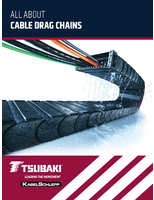Thermo Fisher Scientific Announces the Availability of Three Contamination Testing Methods to Detect Banned Substances in Imported Seafood
SAN JOSE, Calif., (September 03, 2007) - Thermo Fisher Scientific Inc., the world leader in serving science, today announced that the company has developed three food testing methods in response to recent concerns over contamination of imported seafood. On June 28, the U.S. Food and Drug Administration (FDA) banned the import of certain fish species from China because of possible contamination with drugs and unsafe food additives - including nitrofuran, malachite green and chloramphenicol - which are prohibited in food products for human consumption. The ban has stimulated significant interest in the development of analytical methods for detecting trace levels of these substances in food. Thermo Fisher has developed three methods utilizing the advanced analytical technology of the Thermo Scientific TSQ Quantum(TM) family of triple quadrupole mass spectrometers with Highly Selective Reaction Monitoring (H-SRM), enabling the trace-level analysis of complex samples such as animal tissue. The methods are available to download on www.thermo.com/appnotes.
"These food testing methods from Thermo Fisher will help public health laboratories and food manufacturers protect the safety of our nation's food supply," said Greg Herrema, President, Scientific Instruments, Thermo Fisher Scientific. "The sensitivity and reliability that is achievable with Thermo Scientific instrumentation is important in detecting trace levels of the contaminants of concern to the FDA."
Thermo Fisher has developed a sensitive and reliable liquid chromatography coupled with tandem mass spectrometry (LC-MS/MS) method using H-SRM and the Thermo Scientific TSQ Quantum Discovery MAX triple quadrupole mass spectrometer for the detection of nitrofuran metabolites, which are veterinary antibiotics banned in many countries because of health concerns for humans. The method demonstrates a limit of quantitation (LOQ) as low as <0.05 µg/kg in fortified crawfish meat for all four nitrofuran metabolites. This LOQ represents twenty-fold better than the Minimum Required Performance Limit (MRPL) established by the European Union (EU) in 2003 (Application Note 361).
A triphenylmethane dye used as a fungicide in aquaculture, malachite green and its metabolite leucomalachite green have demonstrated putative carcinogenic activity and have been banned by both the FDA and the EU. Thermo Fisher's LC-MS/MS method detected both contaminants in roasted eel meat using the TSQ Quantum Discovery MAX triple quadrupole mass spectrometer. The method showed excellent linearity (0.05 to 8.0 µg/kg), accuracy (90-106% recovery) and reproducibility (4-11% RSD), far exceeding the EU's requirement of MRPL of 2 µg/kg for malachite green and leucomalachite green. Additionally, H-SRM was shown to reduce the chemical noise effectively in a complicated sample matrix, further improving the method sensitivity and specificity (Application Note 385).
Government agencies around the world have prohibited the use of chloramphenicol for the treatment of animals producing food products for human consumption because the antibiotic can potentially cause a lethal condition called aplastic anemia in humans. Thermo Fisher has developed an LC-MS/MS method for chloramphenicol on the Thermo Scientific TSQ Quantum Discovery that yields subpicogram limits of quantitation, which translates to sub-parts-per-billion sample concentrations as well as accuracy and precision values well within the guidelines of the U.S. government for analytical method development and validation (Application Note 337).
To download these application notes, please visit: www.thermo.com/appnotes. Alternatively, for more information about Thermo Scientific LC-MS/MS solutions, please call +1 800-532-4752, e-mail analyze@thermofisher.com or visit http://www.thermo.com/ms




